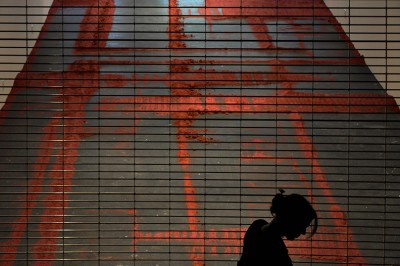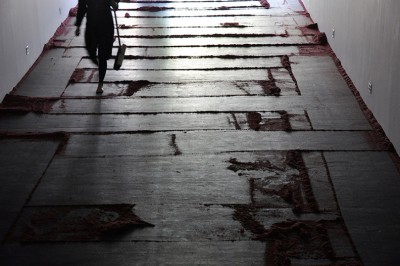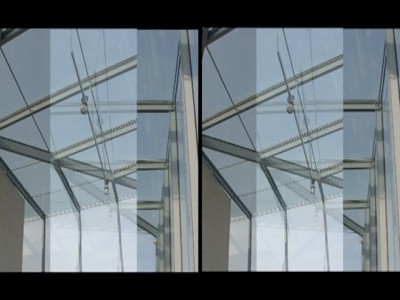Jennifer Gilman
The life has left the house, but the light still moves through it, marking the times of the days that had once been full of human complexity, productivity, passion, change.
I imagine . . .
Early morning. The babies are finally sleeping, calm in the nursery, sun warming their nest. Pauline is in her studio, reading, writing, stealing the quiet moments for her work, for her mind. A ladder of glowing rungs—the eastern sun spilling through the slit windows onto her studio floor—synchronized sundials, angling and stretching together let her know how much time she might have left before they wake.
Late afternoon. Rudolph is napping on his studio day bed, bathed in warm light, rhythmically scored by the mullions, lines he has drawn now drawing him.
Years later. After the children are gone, Rudolph is only scratching on a page to her, an oppressive silence, a wall, a closed door. Pauline has fully claimed the other side, filling it with her Red thoughts, her Red friends. Early morning is a time for clarifying thought. The light comes in quivering slivers, delicate, pale, clear and orderly. Later in the day they will come and fill the rooms with Red talk, each spilling over the others, a cross-hatching of systems of ideas: what is right, what should be.
Now the rooms are quiet, empty, abstract, almost without meaning. But the light still moves through, marking time anyway—untethered time, time released from meaning.
The red sawdust laid out on the floor is an offering to the light, the gift of our attention in acknowledgement of its steady companionship.
Early morning. The house is quiet, as it has long been. The ladder rungs angle and stretch habitually, and then, for a moment, they alight in a blaze of intense Red, and the long clear note of the Hichiriki fills the room with life.
I propose to inhabit the house through a large-scale drawing as performance. A series of floor installations with red sawdust will make visible the poetic qualities of Schindler’s vision, qualities that can be understood and experienced through the body, the senses, and the non-verbal mind. The drawings will mark the movement of light and shadow through the elements of the house, exploring it in relation to space and time, their evolution documented by time-lapse photography.


The house creates a double set of frames. Looking in, the interior space and drawing performance is framed and dissected by the articulated openings. Looking further, the far exterior courtyard is doubly framed and partitioned, a view within a view. Having grown up in a glass house myself, I am well aware of the theatrical, even exhibitionistic dynamic created by this type of space. The Kings Road House has added electricity because of the unusual domestic grouping for which it was designed. By staging an intimate event which unfolds inside the house and is witnessed from outside, this dynamic can be subtly evoked.
Gene Coleman
I will create an audio-visual composition which includes a musical work based on the conceptual, formal, poetic, and historical elements of the house, as well as a film which will incorporate images of the building. These two elements will create a directed dialog between the sounds and the architecture. The composition will explore the history of Schindler’s devotion to contemporary music by using documentary elements (archival footage and narrative text), merging it with the more abstract and poetic experience of the architecture.
In concert with Gilman’s red sawdust drawing performance, the musical composition will be played by live musicians. After the initial performance, a recorded loop will be played alongside her installation. The architectural film will be played in a separate room, with the same music as the soundtrack.
